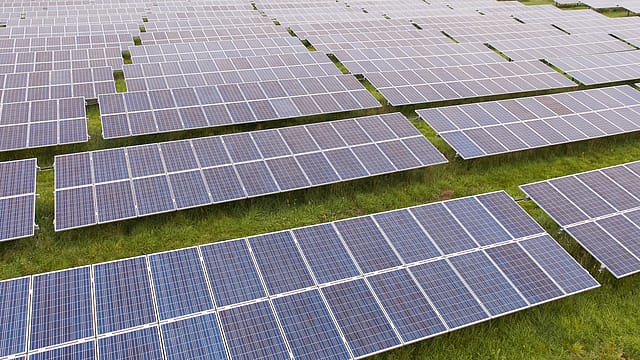Chinese solar module imports down 76% in H123, despite China's global exports growing one-third
ADVERTISEMENT

In the first half of 2023, India is the only country in the world to slash its dependence on solar equipment imports from China--which makes around eight out of every ten solar panels sold in the world.
Chinese solar module (fully assembled solar panels) imports to India declined by 76% or -7.5 gigawatt (GW) year-on-year (YoY), down from 9.8 GW in the first half of 2022 to 2.3 GW in the same period this year. As against this, China's module exports increased by a third or 34% year-on-year to all its exporting markets, growing from 85 GW in the first half of 2022 to 114 GW in the same period this year. China's exports in value during the first half of 2023 were worth $23.8 billion in modules, says data from Ember, a global energy and climate think tank.
Solar cells, which are unassembled parts that make up solar panels, made up the remaining 10% of China’s solar exports by value ($2.5 billion). The main export destinations for solar cells were Türkiye (33%), India (17%), Cambodia (15%), Thailand (10%) and South Korea (4%). India accounts for only 3.6% of China's overall solar equipment exports.
Ember says the decrease in exports to India followed the imposition of tariffs as India shifts away from imports to focus on building and utilising domestic manufacturing capacity. India’s domestic solar module manufacturing capacity has stepped up and there has also been a rise in the number of Chinese cells, which are then assembled locally into solar panels, with India now the second largest destination for exported solar cells after Turkey.
Data from renewable energy tracking firm Mercom India says India's solar cell and module imports rose by 55.1% in Q2 of 2023 to $926.6 million from $597 million in the same period of last year. On a quarter-on quarter basis, the growth was 14.1% from $812 million. Last year, India had imposed an Approved List of Manufacturers and Modules (ALMM) to regulate imports from China and to boost domestic production. As of March 2022, 46 domestic module manufacturers with a cumulative capacity of 11,497 MW were included in the list. This regulation was suspended in March this year for one year till March 2024 to help completion of many ongoing projects which were planned with Chinese equipment. India 's solar module manufacturing capacity is expected to reach approximately 95 GW by the end of 2025, from about 40 GW.
Ember data says more than half of the solar modules exported from China in the first half of 2023 were destined for Europe (58%). The region has also seen the greatest absolute growth worldwide, with exports of solar panels from China to Europe up 47% year-on-year, as 66 GW were shipped to Europe in the first half of 2023, up from 44 GW in the same period last year. Brazil is the next biggest importer after Europe, receiving 9.5 GW. Chinese module exports to Africa grew by 187% , from 0.6 GW in H1-2022 to 3.4 GW in the first half of 2023, driven by South Africa, which turned to rooftop solar as a way out of their energy crises. After Africa, the region with the next fastest relative growth was the Middle East, up 64% (+2.4 GW).
January 2026
Netflix, which has been in India for a decade, has successfully struck a balance between high-class premium content and pricing that attracts a range of customers. Find out how the U.S. streaming giant evolved in India, plus an exclusive interview with CEO Ted Sarandos. Also read about the Best Investments for 2026, and how rising growth and easing inflation will come in handy for finance minister Nirmala Sitharaman as she prepares Budget 2026.
